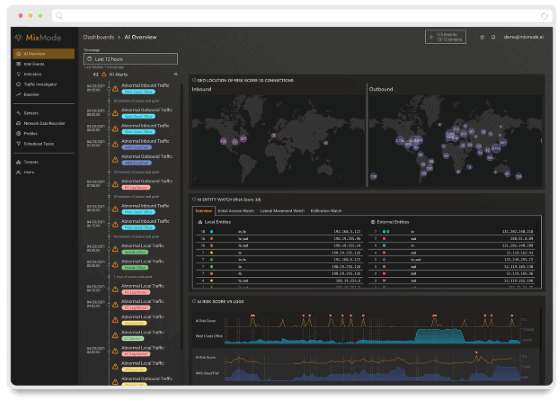Mixmode Blog
Lorem ipsum dolor sit amet, consectetur adipiscing elit.
Data Overload Impacts Security Outcomes
espite the availability of new technology, companies still have to depend on extracted, aggregated, and normalized historical data to operate. The inherent architecture of legacy solutions diverts focus away from fundamental business problems companies need to address.
Read MoreWebinar: Tool Sprawl – The Trillion Dollar Problem in Cybersecurity
Join us for our upcoming webinar on Thursday, July 8th at 11:00 AM (PDT), “Tool Sprawl: The Trillion Dollar Problem in Cybersecurity.” It will be hosted by former CISO of CBRE and Current CEO of 5Q, Don Goldstein, and Matt Shea, MixMode’s Head of Federal. They will discuss and review the trillion dollar problem of tool sprawl, how it was created by vendors and industry analysts intent on selling goods and services that ultimately are failing to defend organizations, and how a new way of looking at cybersecurity can help us overcome it.
Read MoreModern Security Issues Require Modern Solutions
A jumble of ineffective, incomplete, extremely expensive platforms that don’t meet the fundamental challenges faced by enterprise SOC teams in the early 2020s is not sustainable.
Read MoreDr. Igor Mezic, CTO and Chief Scientist at MixMode, Joins Forbes Technology Council
Dr. Igor Mezic, CTO and Chief Scientist at MixMode and world renowned AI researcher, has joined the Forbes Technology Council, an invitation-only community for world-class CIOs, CTOs and technology executives.
Read MoreA Look into Chuck Brooks’s Alarming Cybersecurity Stats
2020 will be remembered most as the year the world was swept up in the COVID pandemic. Dig a little deeper and you’ll find another alarming news story: 2020 was a record breaking year on the Cybersecurity front. There was more data lost in breaches and a higher number of cyber attacks than ever before.
Read MoreWebinar Recap: Why Your Legacy Cyber Platforms Can’t Defend Against Modern Day Attacks
In partnership with Ravenii, our 60-minute talk was hosted by MixMode’s Head of Sales and Alliances, Geoff Coulehan, CEO of Ravenii, Jeff Shipley, and MixMode’s CTO & Chief Scientist, Igor Mezic. They discussed key topics including:
Read MoreNew Video: MixMode Cyber Anomaly Detection Platform
We recently released a new video to better explain how MixMode’s next-generation cybersecurity anomaly detection platform combines the functionality of SIEM, NDR, NTA and UEBA for advanced threat detection, zero day attack identification, false positive alert reduction, forensic investigation and more.
Read MoreThe Top 5 Considerations That Should Guide Your SOC Strategy in 2021 and Beyond
It’s evident that while organizations are spending more and more on legacy cybersecurity solutions, these platforms are not holding up their end of the deal and are not able to proactively defend in a modern, non-signature attack threatscape.
Read MoreWebinar: Why Your Legacy Cyber Platforms Can’t Defend Against Modern Day Attacks
In our upcoming webinar on Tuesday, May 18th, “Why Your Legacy Cyber Platforms Can’t Defend Against Modern Day Attacks,” CEO of RAVENii, Jeff Shipley joins MixMode Head of Sales and Alliances Geoff Coulehan to uncover why the cybersecurity industry is failing to deliver on its promises.
Read More









